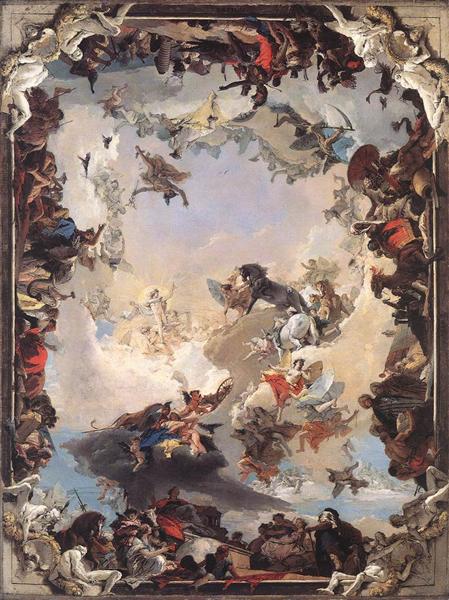1740
Rococo

description
The French word rococo comes from rocaille – rocky. The term came into use in the middle of the 18th century and had a negative meaning.
Rococo is an art movement based on elements of classicism and baroque; it originated in France. This style was widespread in Italy, Russia, Germany, Czech Republic, etc.
Rococo has light, smooth and playful art forms. The palette becomes pastel – lilac, lavender, pale yellow, sky blue, pink tones. The canvases show us endless celebrations, theatrical performances, love couples, portraits of the aristocracy, pastorals and “carefree” landscapes.
Key ideas:
Rococo is a whim, a woman’s whim.
“Rococo – the time of spoiled taste” – Denis Diderot.
Aestheticism is the artistic and psychological nature of Rococo, it is aestheticism that is the key idea of this style, focusing on the desires of immortality and ideal beauty, on the desire to hide from reality in love mise-en-scenes. The spoiled, well-fed and capricious art of Rococo depicts the real life of people extremely superficially. Developing at royal palaces and in aristocratic estates, there was no place for the trivial everyday life of a person. The protagonist of the Rococo painting does not feel cold, he does not get sick, he does not have a feeling of hunger, he does not participate in inter-family conflicts and does not think about socio-political troubles. Obsessive ideas about eternal youth are traced; they are expressed in the form of a blush, regardless of age and gender; powder helps to look younger, turns faces into masks.
The historicism of Rococo painting helps historians to correctly understand the social and everyday structure of society, to study its moral and ethical features. Thanks to Rococo, we have an idea of the architectural and landscape ensemble of some cities at a particular time, we can study the elements of clothing and the interior, appearance and even habits. Rococo works tell that fluffy pannier and justocor skirts, white wigs and women’s garden hairstyles, narrow hips and a wasp waist were in vogue.
Key Artists: François Boucher, Giambattista Tiepolo, Pietro Longhi, Canaletto, Francesco Guardi, Bernardo Bellotto, Francis Cotes, Jean Hubert, Gustaf Lundberg.
Key works:
Leda and the swan. 1741. Francois Boucher.
Visit to the Lady. 1746. Pietro Longhi.
Windsor Castle. 1747. Canaletto.
